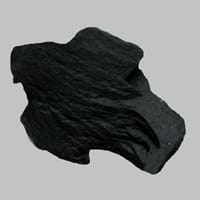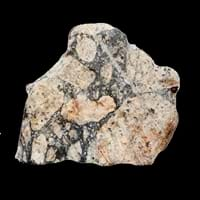Definition
Lignite is a soft brownish coal which shows traces of plants and is intermediate between bituminous coal and peat
Breccia is a rock consisting of angular fragments of stones which are cemented by finer calcareous material
Discoverer
Unknown
Unknown
Etymology
From French, Latin lignum wood + -ite1
From Italian, literally gravel, Germanic origin and related to break
Class
Sedimentary Rocks
Sedimentary Rocks
Sub-Class
Durable Rock, Soft Rock
Durable Rock, Hard Rock
Group
Not Applicable
Not Applicable
Other Categories
Coarse Grained Rock, Fine Grained Rock, Medium Grained Rock, Opaque Rock
Coarse Grained Rock, Medium Grained Rock, Opaque Rock
Texture
Amorphous, Glassy
Brecciated, Clastic
Color
Black, Brown, Dark Brown, Grey, Light to Dark Grey
Beige, Black, Blue, Brown, Buff, Green, Grey, Orange, Pink, Purple, Red, Rust, White, Yellow
Durability
Durable
Durable
Appearance
Veined or Pebbled
Layered, Banded, Veined and Shiny
Interior Uses
Not Yet Used
Countertops, Decorative Aggregates, Entryways, Floor Tiles, Flooring, Homes, Hotels, Interior Decoration
Exterior Uses
Not Yet Used
As Building Stone, As Facing Stone, Paving Stone, Garden Decoration, Office Buildings
Other Architectural Uses
Not Yet Used
Curbing
Construction Industry
for Road Aggregate, Steel Production
As Dimension Stone, Construction Aggregate, Landscaping, Roadstone
Medical Industry
Not Yet Used
Not Yet Used
Antiquity Uses
Not Yet Used
Artifacts, Sculpture
Commercial Uses
Electricity Generation
Creating Artwork, Gemstone, Jewelry
Types
Xyloid Lignite or Fossil Wood and Compact Lignite or Perfect Lignite
Collapse Breccia, Fault Breccia, Flow Breccia, Pyroclastic Breccia, Igneous Breccia and Impact Breccia
Features
Generally rough to touch, Helps in production of Heat and Electricity, Used as fossil fuel
Available in Lots of Colors and Patterns, Clasts are smooth to touch
Archaeological Significance
Monuments
Not Yet Used
Not Yet Used
Famous Monuments
Not Applicable
Not Applicable
Sculpture
Not Yet Used
Used
Famous Sculptures
Not Applicable
Data Not Available
Pictographs
Used
Not Used
Petroglyphs
Used
Not Used
Figurines
Not Yet Used
Used
Formation
Coal formation takes place due to accumulation of plant debris in a swamp environment. The Coal formation process continues, as peat turns into lignite brown or black coal at increasing heat and pressure.
Breccia is a clastic sedimentary rock which is composed of broken fragments of minerals or rock which are cemented together by a fine-grained matrix and it forms where broken, angular fragments of rock or mineral debris accumulate.
Mineral Content
Not Available
Calcite, Clay, Feldspar, Phosphates, Quartz, Silica
Compound Content
Carbon, Hydrogen, Nitrogen, Oxygen, Sulphur
Aluminium Oxide, Ca, NaCl, CaO, Iron(III) Oxide, Potassium Oxide, Sodium Oxide, Silicon Dioxide, Titanium Dioxide
Types of Metamorphism
Not Applicable
Burial Metamorphism, Cataclastic Metamorphism
Types of Weathering
Biological Weathering, Chemical Weathering, Mechanical Weathering
Biological Weathering, Chemical Weathering, Mechanical Weathering
Types of Erosion
Chemical Erosion, Water Erosion, Wind Erosion
Chemical Erosion
Grain Size
Medium to Fine Coarse Grained
Medium to Coarse Grained
Fracture
Conchoidal
Uneven
Porosity
Highly Porous
Less Porous
Luster
Dull to Vitreous to Submetallic
Dull to Pearly
Cleavage
Non-Existent
Non-Existent
Toughness
Not Available
Not Available
Specific Gravity
1.1-1.4
2.86-2.87
Transparency
Opaque
Opaque
Density
800-801 g/cm3
0 g/cm3
Specific Heat Capacity
Not Available
Resistance
Heat Resistant
Heat Resistant, Impact Resistant, Pressure Resistant, Wear Resistant
Deposits in Eastern Continents
Asia
Bangladesh, Burma, Cambodia, China, India, Indonesia, Kazakhstan, Malaysia, Mongolia, Pakistan, Turkey, Vietnam
China, India, Kazakhstan, Mongolia, Russia, South Korea, Uzbekistan
Africa
Botswana, Kenya, Morocco, Mozambique, South Africa, Tanzania
Namibia, Nigeria, South Africa
Europe
Belgium, Bulgaria, England, France, Germany, Greece, Hungary, Kosovo, Netherlands, Norway, Poland, Romania, Serbia, Slovakia, Slovenia, The Czech Republic, Ukraine, United Kingdom
Austria, Denmark, Germany, Great Britain, Netherlands, Norway, Poland, Sweden, Switzerland, United Kingdom
Others
Not Yet Found
Greenland
Deposits in Western Continents
North America
Canada, Mexico, USA
Barbados, Canada, Mexico, Panama, USA
South America
Brazil, Chile, Colombia, Venezuela
Brazil
Deposits in Oceania Continent
Australia
New South Wales, Queensland, Victoria
New South Wales, New Zealand
All about Lignite and Breccia Properties
Know all about Lignite and Breccia properties here. All properties of rocks are important as they define the type of rock and its application. Lignite and Breccia belong to Sedimentary Rocks.Texture of Lignite is Amorphous, Glassy whereas that of Breccia is Brecciated, Clastic. Lignite appears Veined or Pebbled and Breccia appears Layered, Banded, Veined and Shiny. The luster of Lignite is dull to vitreous to submetallic while that of Breccia is dull to pearly. Lignite is available in black, brown, dark brown, grey, light to dark grey colors whereas Breccia is available in beige, black, blue, brown, buff, green, grey, orange, pink, purple, red, rust, white, yellow colors. The commercial uses of Lignite are electricity generation and that of Breccia are creating artwork, gemstone, jewelry.










